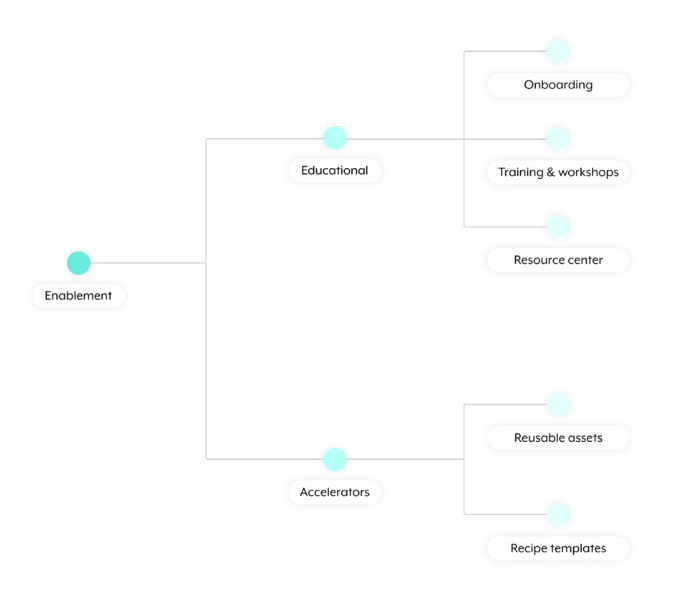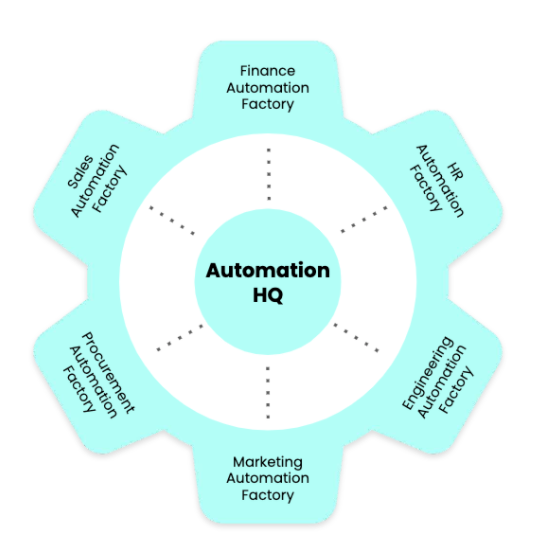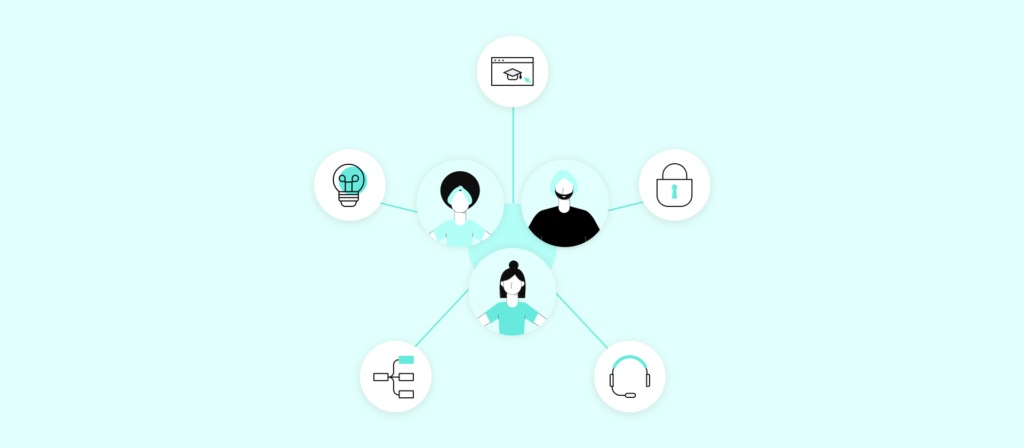Centers of excellence often carry negative connotations.
You might associate them with terms like controlling and beauracratic; you might even think they prevent your organization from innovating and scaling effectively.
However, in the context of designing, deploying, and operating automations, a center of excellence can offer exactly what‘s needed to engage in enterprise-wide automation successfully.
We’ll cover what a high-performing automation center of excellence can look like based on what we’ve seen play out in the real-world. But first, let’s address what it is and when it makes sense to adopt one.

Adopt automation at scale with Workato
Workato, the leader in enterprise automation, offers a low-code UX and hundreds of thousands of automation templates to help your team bring a high volume of automations to market, quickly.
What is an automation center of excellence?
An automation center of excellence (COE) consists of a small group of individuals who institute security and governance controls and provide enablement resources and activities on behalf of colleagues involved in building automations.
When you should build an automation center of excellence
The answer depends on the maturity of your automation program and your long-term use cases for automation.
If your organization is just beginning its automation journey, it’s probably too early to invest in a COE. Also, if you’re confident that your organization only needs a select few individuals to build and maintain automations over time—which is highly unlikely—, it may not make sense to adopt one.
In contrast, if you already have several employees outside of IT who are involved in building automations or that you’d like to include in the process sooner rather than later, you’ll need to build an automation COE.
Related: A look at Box’s automation COE
How to set up an automation center of excellence
Building an automation center of excellence, or what we refer to as an Automation HQ, starts with creating 4 types of roles:

1. Platform owner and governance lead: They’re tasked with designing and providing the governance processes, best practices, and standards for building automations. Moreover, they help set goals for the automations, track their performance, and assign improvement targets over time.
2. Master chef: These automation experts can provide reusable assets (e.g. error handling framework) and automation templates to help citizen integrators build high-performing automations more easily. These individuals can also play a hand in troubleshooting automations and in building their own, especially when an automation is complex and business-critical.
3. Evangelist: They’re focused on building awareness of and interest in the organization’s automation program by sharing key success stories.
4. Trainers: They carry out several in-person and online training initiatives to help business users become more comfortable with building their own automations.
On top of all this, the Automation HQ often needs executive sponsors. These individuals should be able to articulate the broader vision of the Automation HQ and its offerings to various business units—with the long-term goals of garnering additional participation with and budget for the Automation HQ.
Once established, your HQ can provide an array of enablement activities and resources that fall in one of two buckets: educational and accelerators.

1. Educational initiatives include an onboarding program, where citizen integrators gain foundational knowledge through self-paced courses; trainings and workshops, where citizen integrators get experience with building automations specific to their areas of interest; and a resource center, where anyone can get automation-specific questions answered, as well as receive updates from the Automation HQ.
2. Accelerators include automation (or “recipe”) templates that can be used as is or easily modified. It also includes reusable assets, which can take the form of application connectors, data models, documentation, etc.
The benefits of an automation center of excellence
Once your automation center of excellence is set up and providing the enablement activities outlined above, your organization is set to profit in all sorts of ways.
Here are a few of the top benefits you can expect:
- Automations will follow certain standards and best practices. By having your HQ enable citizen integrators and oversee the operations, your organization’s automations are all but certain to achieve their respective aims.
- Data is less likely to be compromised. Since the platform owner within the Automation HQ can implement the proper automation governance measures across the organization, confidential and business-critical data is kept secure.
- Automation Factories can start to form. A factory includes citizen integrators, app admins, and IT ops personnel who focus on a particular category of automation that directly aligns with a functional team. For example, an HR Automation Factory would—as you can guess—align with the HR team.
The image below highlights the various Automation Factories we’ve seen customers implement successfully.

As these factories become more comfortable in building and managing their automations independently, your organization’s capacity for building automations should only increase. In addition, given the level of business expertise within a factory, each is likely better positioned than the HQ to prioritize automations based on business impact.
Related: The role of Automation Factories and an Automation HQ across 3 operating models
Ready to adopt an automation center of excellence?
Workato, the leader in enterprise automation, offers all of the features your Automation HQ needs. This includes:
- Hundreds of thousands of automation templates and hundreds of pre-built connectors
- A low-code UX that’s accessible to lines of business, in addition to IT
- Enterprise-grade governance capabilities, including the ability to provision users with access to certain workspaces, where each individual is given a defined role per environment
In addition, our Enterprise Architecture team has developed the GEARS framework (govern, enable, adoption, run & optimize, scale) to help organizations of all shapes and sizes build their Automation HQ and Automation Factories.
